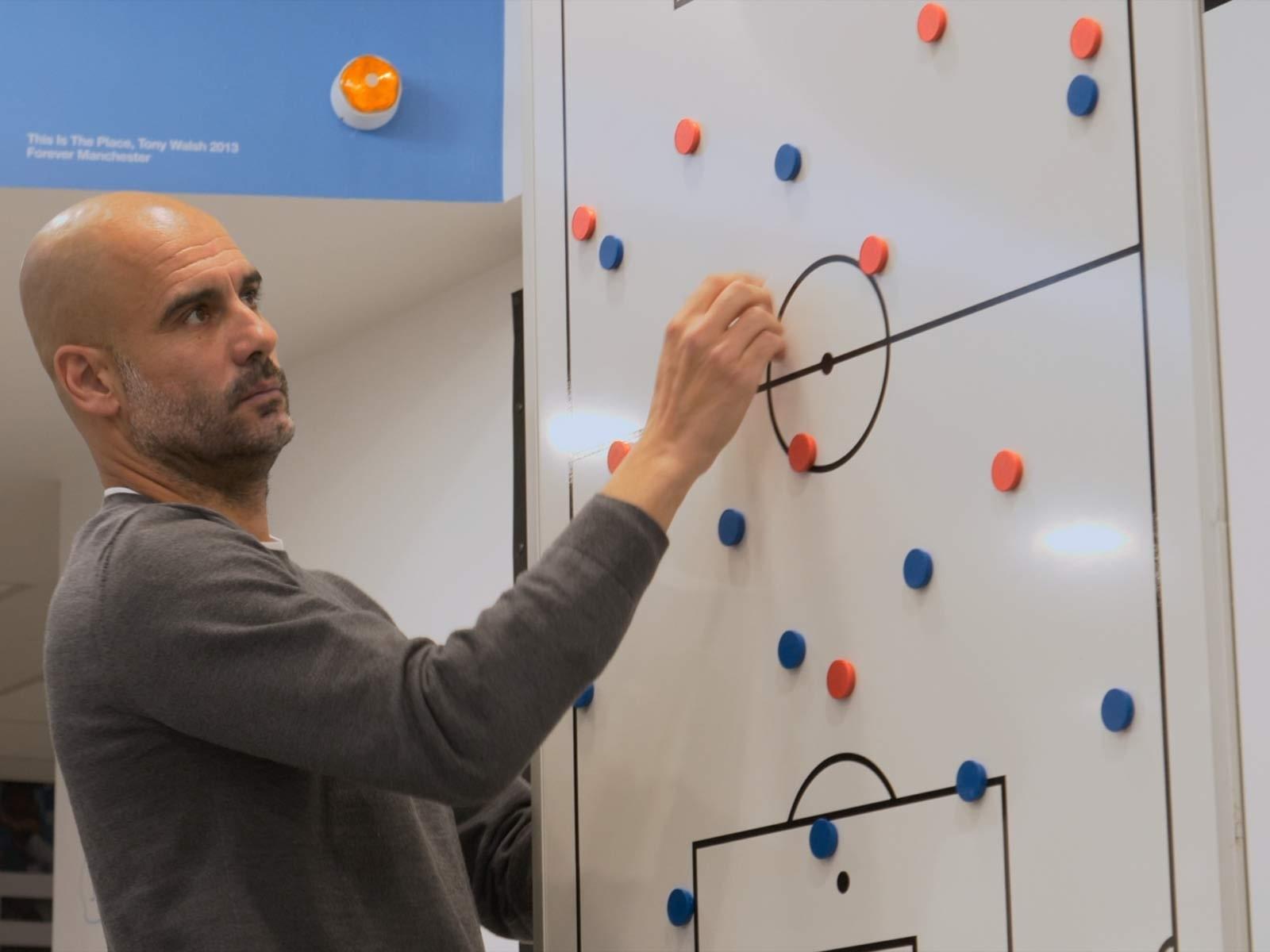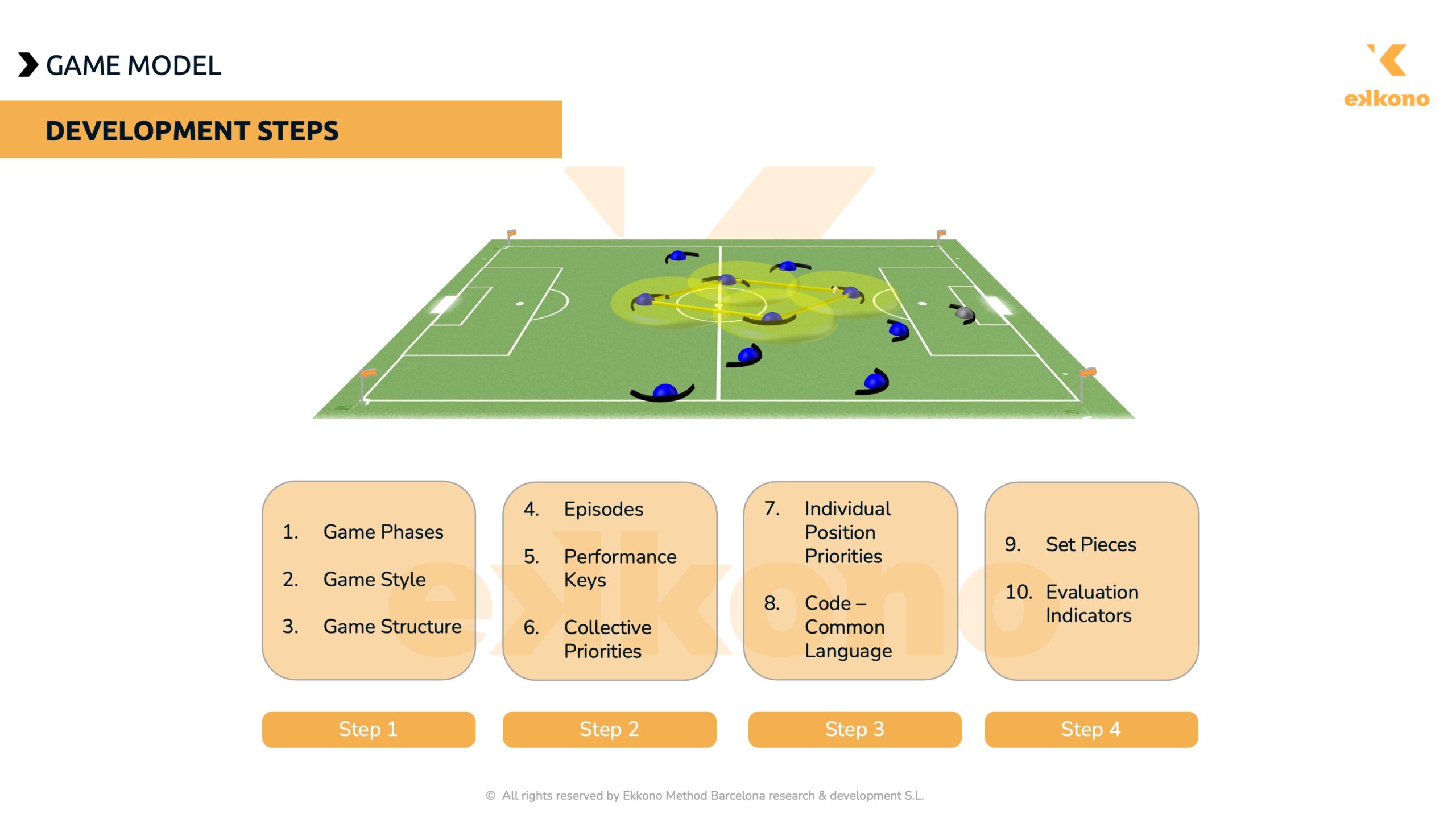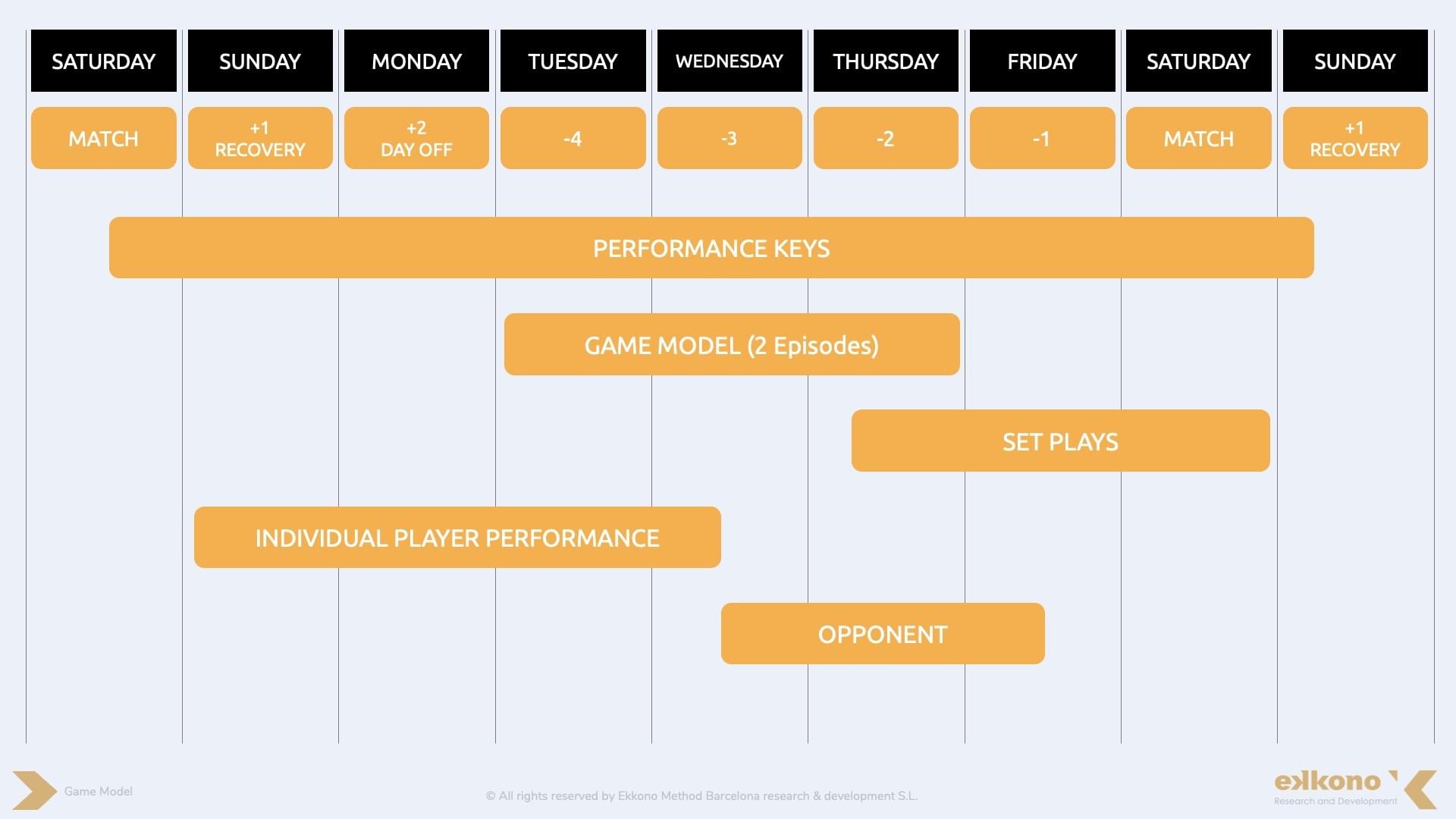
The Evolution of Coaching and Game Analysis
Twenty or thirty years ago, the game models used in professional football were very basic and rudimentary. Many coaches focused on optimizing the physical condition levels or specific aspects of their players’ competitive profiles. During the week, their activities as coaches mainly involved taking care of those two aspects, practicing some set plays, and thinking about lineups, game systems, and alternatives during matches.
In the last few decades, the analysis and modeling of the game have improved significantly. There has been progress in coaching curriculums, the professionalization of additional members of the coaching staff, and the use of video and other technologies. This evolution has been combined with a new trend of analyzing the structures that teams use, the spatial advantages generated, the possibilities of ball circulation, and the positional exchanges and rotations between players.
At Ekkono, through the membership program, and also in our courses and discussions with coaches around the world, we contribute to this ongoing research process about football game models.

Development Steps of Game Model
Steps to build a successful game model, as described in the Ekkono Method approach
Modern Coaches and the Risk of Overcomplexity
As a consequence of all the aspects mentioned above, nowadays many coaches prepare a specific game model that they want their teams to play with. They no longer spend most of their time thinking about physical condition (although it is not forgotten, and the protocols to prevent injuries are even better), intensity during the game, concentration, or the determination with which their players will approach the match. Although they know that all these elements are important to optimize performance, coaches are now focusing on teaching their players how to behave during matches. In other words, they are helping players find solutions regarding where and when to position themselves on the field or how to move the ball. These are now the main points in their game plans.
Modern Coaches and the Risk of Overcomplexity
As a consequence of all the aspects mentioned above, nowadays many coaches prepare a specific game model that they want their teams to play with. They no longer spend most of their time thinking about physical condition (although it is not forgotten, and the protocols to prevent injuries are even better), intensity during the game, concentration, or the determination with which their players will approach the match. Although they know that all these elements are important to optimize performance, coaches are now focusing on teaching their players how to behave during matches. In other words, they are helping players find solutions regarding where and when to position themselves on the field or how to move the ball. These are now the main points in their game plans.
The problem is that, as has happened in many other sectors, we have gone from one extreme to the other. If thirty years ago the game plan considered too few scenarios (and players were forced to improvise based on their skills), nowadays there is a trend toward training too many scenarios.
Frequently, weekly plans or even training session sheets include several episodes for each phase of the game. They are proposals generated through accumulation, in which the coach uses all their knowledge about the game. This creates the illusion that, over the course of months, players will learn to solve dozens of scenarios — which is, in fact, impossible. We say it is impossible for two reasons. First, because no team has ever achieved it in the entire history of football. And second, because behind these programs full of content, there is often hidden the coach’s lack of clarity.

game_model_training
Example of a micro-cycle plan, where only 2 game model episodes are trained during the week
Selection Over Accumulation
What gives top coaches their effectiveness is training a game model based on a reduced group of hierarchized scenarios, each defined with in-depth collective and and individual guidelines. Executing this plan does not mean following an accumulation process as described in the previous paragraph, but rather a selection process. The coach possesses much more knowledge than what is used, and prioritizes — for each team and at each moment — the most suitable content. Because their analysis is much deeper, the coach does not need a long list of content to train, but can instead work on many different aspects derived from a small list of core concepts. This, obviously, is much more difficult and requires greater knowledge from the coach in areas such as analysis, planning, and methodology.
To better understand our reasoning, let’s think of a schematic image of a tree. Imagine that this picture represents a team’s game model — the process and the possibilities it offers when making decisions. Thirty years ago, it would have been enough to draw only the trunk and two or three thick branches to represent a team’s game plan. We were in an extreme and insufficient situation.
Nowadays, we are in a very different situation, where great value is placed on game plans represented by a trunk with many thick branches and several medium branches emerging from them. In these models, the final representation appears very harmonious, circular, and balanced — let’s say, spectacular.
“BUILDING A GAME MODEL IS LIKE DRAWING A TREE. IN ORDER TO BE SUCCESSFUL, YOU MUST DRAW A VERY DETAILED TREE FULL OF TINY BRANCHES FIRST AND THEN ONLY KEEP THOSE BRANCHES THAT WILL BE PART OF THE GAME MODEL”
Quality Over Quantity in Game Model Design
Our vision is that, in order to achieve success, we must aim to draw a less balanced and symmetric tree — one with a certain number of thick branches from which medium branches grow, but above all, with many tiny branches coming out of the medium ones. However, the final picture should result from erasing the thick, medium, and small branches that will not be part of your game model. And of course, to erase them properly, the coach must first learn and draw them.
From all this, we can extract two conclusions. The first is that coaches who want to reach excellence in their work must consider continuous education as a pillar of their professional careers. The second is that it is better to train a small number of concepts very well than to train a larger number of them poorly. In other words, as in many other aspects of football, we should prioritize quality over quantity when training.
Want to learn how to design, structure, and implement your own Game Model step by step? Join our Advanced Game Model Course and build a complete, practical model tailored to your team.

